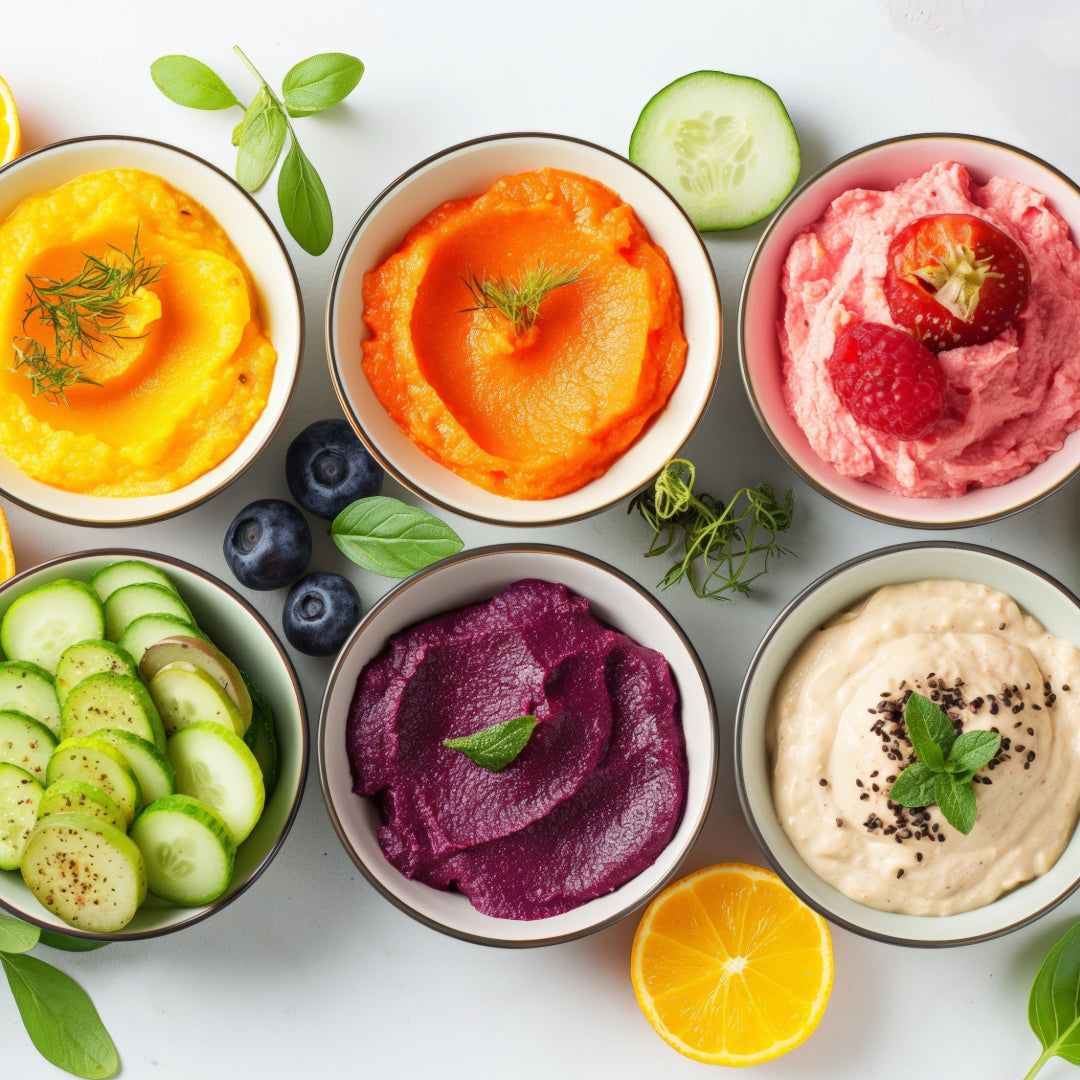
Sculpt Your Six-Pack: How the Best Foods Define Abs and Prove They're Made in the Kitchen
Introduction : Essential Diet Tips and Foods to Avoid for Ultimate Ab Definition
Are you on a quest to achieve that elusive six-pack or strengthen and define your core? While many devote hours to crunches and planks, a crucial component often overlooked is nutrition. Indeed, your diet plays a pivotal—if not more significant—role in sculpting your abs compared to exercise alone. In this guide, we delve deep into the fundamental aspects of nutrition that influence the development and definition of your abdominal muscles. From choosing the best diet for abs that includes lean proteins and whole grains to understanding which fatty fish and nutrient-dense foods fuel muscle growth and which sugary or fried foods to avoid, this article provides you with practical, actionable advice.
Nutrition's impact on ab definition transcends mere calorie counting. It involves a strategic intake of proteins, fats, and carbohydrates, each playing a vital role in muscle repair, reducing belly fat, and enhancing metabolic health. Effective abs sculpting is not merely about creating a calorie deficit; it's about optimizing your diet for maximum muscle exposure and sustainable health benefits.
Crafted for both fitness enthusiasts and novices, this guide offers insights into meal planning, essential nutrients, and dietary adjustments necessary for revealing defined abs. Whether you are just beginning your fitness journey or seeking to refine your approach to nutrition, understanding the role that diet plays in achieving your ab goals is paramount.
By the end of this article, you’ll not only know what to eat and what foods to avoid but also understand how these choices impact your overall body composition. We will explore how specific nutrients enhance muscle growth, which foods might hinder your progress, and how to strategically time your meals to support your workout regimen. Embark on this educational journey to transform how you think about food and its profound impact on sculpting your abs, improving body composition, and enhancing overall health. Abs are indeed made in the kitchen, and with the right diet changes, you can reveal your abs and achieve a balanced, lean physique.
1. Essential Nutrients for Defined Abs
Proteins: The Building Blocks of Muscle
Proteins are crucial for muscle repair and growth, making them a key nutrient for developing strong, visible abs. The amount of protein needed can vary based on your level of activity, body weight, and muscle mass goals. Generally, aiming for 1.2 to 2.0 grams of protein per kilogram of body weight per day is recommended for active individuals. Excellent sources of high-quality protein include lean meats like chicken and turkey, fish such as salmon and tuna, dairy products like Greek yogurt and cottage cheese, and plant-based options such as lentils, chickpeas, and quinoa.
Healthy Fats: Why They're Important
While often misunderstood, healthy fats are vital for overall health and can actually help you achieve better abs by supporting metabolism and hormone production. Fats should not be feared but should be chosen wisely. Monounsaturated and polyunsaturated fats, found in avocados, nuts, seeds, and olive oil, are heart-healthy options that can help reduce inflammation and provide energy for longer, more intense workouts.
Complex Carbohydrates: Supporting Energy and Fat Loss
Complex carbohydrates are essential for maintaining energy levels throughout the day and supporting intense workouts. Unlike simple carbs, which can lead to increased fat storage, complex carbs provide a slow and steady release of energy. They are crucial for fueling exercise and aiding in recovery. Sources of complex carbohydrates include whole grains like brown rice and oats, starchy vegetables like sweet potatoes, and legumes. These foods not only fuel your workouts but also help manage blood sugar levels, aiding in overall fat loss and better visibility of abdominal muscles.

2. Effective Meal Plans
Sample Meal Plan for a Day: Tailored for Ab Definition
Crafting a meal plan that contributes to ab definition involves careful consideration of nutrient timing and portion control. Here’s a sample daily meal plan designed to fuel workouts and maximize fat loss:
Breakfast (7:00 AM): Oatmeal with sliced banana and a sprinkle of cinnamon, paired with a protein shake.
Mid-Morning Snack (10:00 AM): Greek yogurt with a handful of almonds.
Lunch (1:00 PM): Grilled chicken breast with quinoa and steamed broccoli.
Afternoon Snack (4:00 PM): Apple slices with peanut butter.
Dinner (7:00 PM): Baked salmon with a side of mixed greens salad topped with avocado and a vinaigrette dressing.
Evening Snack (Optional, 9:00 PM): Cottage cheese with fresh berries. This plan provides a balanced mix of protein, healthy fats, and complex carbohydrates, spread throughout the day to maintain energy levels and minimize hunger pangs.
Pre and Post Workout Meals: Maximizing Abs Sculpting
To optimize your workout for maximum abs sculpting, it's crucial to focus on pre and post-workout nutrition:
Pre-Workout (30 minutes before): A banana with a small cup of coffee provides a quick source of carbohydrates for energy and caffeine for increased focus and endurance.
Post-Workout (within 30 minutes): A protein smoothie made with whey protein, a handful of spinach, frozen berries, and a tablespoon of flaxseeds to aid in muscle recovery and growth. These meals ensure you have the necessary energy for a strenuous workout and provide the right nutrients for recovery and muscle building, which are critical for defining abs.
3. Foods to Avoid
Sugar and Processed Foods: Impact on Belly Fat
When your goal is to sculpt defined abs, one of the first dietary changes you should consider is reducing your intake of sugar and processed foods. These foods are typically high in calories and low in nutrients, leading to weight gain and increased belly fat, which can obscure your abdominal muscles. Sugars, particularly refined sugars, trigger a spike in insulin levels, promoting fat storage, especially around your midsection. Processed foods are often laden with hidden sugars, excessive salt, and unhealthy fats that can contribute to inflammation and bloat, further detracting from the definition of your abs.
Heavy Dairy and Fatty Meats: How They Can Hinder Your Progress
Dairy products and fatty cuts of meat can also impede your progress towards achieving well-defined abs. Heavy dairy products like cream and full-fat cheese are high in saturated fats and can be hard to digest, leading to gastrointestinal issues and bloating. While some dairy can be beneficial, such as Greek yogurt which offers a good source of protein and probiotics, moderation is key, and alternatives like almond or oat milk might be preferable for those sensitive to lactose. Similarly, fatty meats may increase your total caloric intake and saturated fat consumption, which can be counterproductive when trying to reduce body fat. Opting for leaner cuts of meat such as chicken breast, turkey, and fish can provide the necessary protein without the extra fat.
4. Hydration and Its Role in Muscle Definition
Water Intake: How Much Water Should You Drink to Help Reveal Those Abs?
Proper hydration is a key, yet often overlooked, component of a diet plan for muscle definition, including achieving well-defined abs. Water plays a crucial role in nearly every bodily function, and its benefits extend to enhancing muscle tone and assisting in fat loss. Adequate water intake helps regulate digestion and maintain optimal blood flow, which is essential for efficiently transporting the nutrients needed for muscle repair and growth.
For those focused on defining their abs, water can also help reduce bloating and prevent constipation, which can make your stomach appear flatter. Moreover, staying hydrated boosts your metabolism, potentially increasing the number of calories you burn throughout the day. It also helps fill you up, which can reduce the likelihood of overeating or snacking on unhealthy foods that add belly fat, detracting from your abs' visibility.
So, how much water should you drink to maximize these benefits? A general rule of thumb is to aim for approximately 1 ounce of water per pound of body weight per day, especially if you are active. This amount should be increased if you engage in intense workouts, as a significant amount of fluid can be lost through sweat during exercise. For example, a person weighing 150 pounds should target around 150 ounces of water daily, adjusting based on activity level and environmental conditions.
Additionally, the timing of your water intake can also influence your abs' appearance and your overall effectiveness during workouts. Drinking water before meals can help promote satiety and aid in weight management. Consuming water throughout your workout ensures that your muscles are well hydrated and performing at their best. Ultimately, making hydration a priority can help you achieve and maintain the abdominal definition more effectively.
5. Supplements That Can Help
Discuss the Role of Supplements like BCAAs, Protein Powders, and Others in Aiding Muscle Growth and Recovery
While a balanced diet is critical for developing defined abs, certain dietary supplements can enhance muscle growth and recovery, supporting your fitness goals. Supplements are not a replacement for nutrient-rich foods but can be a valuable addition to an already healthy diet, especially for those who train hard and may need extra nutrients to support an active lifestyle.
Protein Powders: Protein is essential for muscle repair and growth. While it’s best to get your protein from whole food sources, protein powders can be a convenient and efficient way to ensure you meet your daily protein needs. Whey protein is popular for its rapid digestion and abundance of essential amino acids. Vegan options like pea, hemp, and rice protein are excellent alternatives for those avoiding dairy.
Branched-Chain Amino Acids (BCAAs): BCAAs consist of three essential amino acids: leucine, isoleucine, and valine, which are crucial for muscle protein synthesis. Supplementing with BCAAs can help reduce muscle soreness, decrease exercise-induced fatigue, and provide muscle-building benefits during workouts.
Creatine: This is one of the most well-researched supplements known for enhancing strength, increasing lean muscle mass, and helping muscles recover more quickly during exercise. Creatine provides energy for high-intensity workouts and helps promote muscle growth by hydrating muscle cells with water.
Omega-3 Fatty Acids: Found in fish oil supplements, omega-3 fatty acids are known for their anti-inflammatory properties, which can help reduce recovery time between workouts. Additionally, omega-3s improve heart health and can enhance joint flexibility and function, which is crucial for maintaining workout consistency.
It’s important to choose high-quality supplements from reputable sources. Always consult with a healthcare provider before starting any new supplement, especially if you have underlying health conditions or are taking other medications.
Se our Supplement Colection
Conclusion:
Achieving well-defined abs is a multifaceted journey that balances intense physical training with meticulous nutritional planning. It's not just about pushing hard in the gym but also making intelligent choices in the kitchen. The guidelines provided in this blog post aim to enhance your understanding of how significant diet is in shaping your abdominal area. By incorporating our comprehensive nutritional advice, you can boost your efforts towards sculpting more effective and visible abs.
Remember, the key to visible abs does not lie solely in the exercises you perform but also significantly in the foods you consume. Consistency is essential—not just in your physical workouts but also in adhering to a diet that supports your goals for muscle definition. Small, consistent changes to your eating habits can lead to significant transformations in how your body looks and feels.
Start implementing these small changes today, and the results will soon be evident when you look in the mirror. Each meal and workout is a step closer to your goal of achieving that sought-after six-pack. The journey requires patience and perseverance, and with the right approach, your efforts will pay off handsomely.
For more personalized insights and detailed guides on specific diets or workouts that can further aid your journey towards great abs, consider subscribing to our newsletter. Join our community of fitness enthusiasts who are all striving to be their best selves. Together, we can push each other towards our fitness goals with motivation and shared knowledge.







